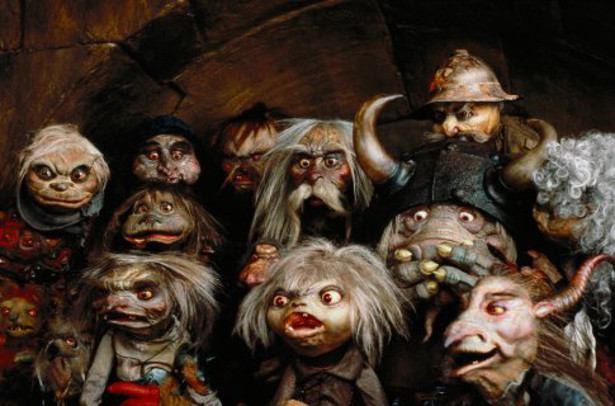Goblins, Goblins Everywhere!
I’ve written about just using bears instead of writing up new monsters more than once (for example, see here and here). This isn’t a new idea, and I’m certainly not the first person to just use bears.
Recently on the Facebook in a 5E D&D group, a poster asked about how “to still keep goblins challenging without a fireball wiping them all.” I posted this link to a PDF with four goblins, CRs 1/8 to 2. The goblins are really just quickly done versions of kobold, orcs, bugbears, and a generic druid. I did a little bit of tweaking with ability scores, and that’s about it.
After the picture, you’ll find two more goblins that are really just slightly modified other monsters.

Goblin Hag
Small humanoid (goblinoid), lawful evil
Armor Class 17 (natural armor)
Hit Points 72 (11d6+33)
Speed 30 ft.
Ability Scores STR 12 (+1), DEX 18 (+4), CON 16 (+3), INT 13 (+1), WIS 14 (+2), CHA 14 (+2)
Skills Arcana +3, Deception +4, Perception +4, Stealth +6
Senses darkvision 60 ft., passive Perception 14
Languages Common, Draconic, Goblin
Challenge 3 (700 XP)
Amphibious. The goblin hag can breathe air and water.
Innate Spellcasting. The goblin hag’s innate spellcasting ability is Charisma (spell save DC 12). She can innately cast the following spells, requiring no material components:
At will: dancing lights, minor illusion, vicious mockery
Mimicry. The goblin hag can mimic animal sounds and humanoid voices. A creature that hears the sounds can tell they are imitations with a successful DC 14 Wisdom (Insight) check.
Actions
Claws. Melee Weapon Attack: +6 to hit, reach 5 ft., one target. Hit: 11 (2d6+4) slashing damage plus 2 (1d4) acid damage.
Illusory Appearance. The goblin hag covers herself and anything she is wearing or carrying with a magical illusion that makes her look like another creature of her general size and humanoid shape. The illusion ends if the goblin hag takes a bonus action to end it or if she dies.
The changes wrought by this effect fail to hold up to physical inspection. For example, the goblin hag could appear to have smooth skin, but someone touching her would feel her rough, warty flesh. Otherwise, a creature must take an action to visually inspect the illusion and succeed on a DC 20 Intelligence (Investigation) check to discern that the goblin hag is disguised.
Invisible Passage. The goblin hag magically turns invisible until she attacks or casts a spell, or until her concentration ends (as if concentrating on a spell). While invisible, she leaves no physical evidence of her passage, so she can be tracked only by magic. Any equipment she wears or carries is invisible with her.
Two-Headed Goblin
Medium humanoid (goblinoid), lawful evil
Armor Class 14 (natural armor)
Hit Points 75 (10d8+30)
Speed 40 ft.
Ability Scores STR 17 (+3), DEX 12 (+1), CON 16 (+3), INT 6 (-2), WIS 10 (+0), CHA 8 (-1)
Skills Perception +4
Senses darkvision 60 ft., passive Perception 14
Languages Common, Giant, Goblin
Challenge 4 (1,100 XP)
Brute. A melee weapon deals one extra die of its damage when the two-headed goblin hits with it (included in the attack).
Two Heads. The two-headed goblin has advantage on Wisdom (Perception) checks and on saving throws against being blinded, charmed, deafened, frightened, stunned, and knocked unconscious.
Wakeful. When one of the two-headed goblin’s heads is asleep, its other head is awake.
Actions
Multiattack. The two-headed goblin makes two attacks: one with its battleaxe and one with its morningstar.
Battleaxe. Melee Weapon Attack: +7 to hit, reach 5 ft., one target. Hit: 12 (2d8+3) slashing damage.
Morningstar. Melee Weapon Attack: +7 to hit, reach 5 ft., one target. Hit: 12 (2d8+3) piercing damage.

Leave a Reply